If you love Sicily do not miss this post: it will make you travel through time to discover the land of gods and heroes!
“This is the homeland of the gods of Greek mythology. Near these places, Pluto kidnapped Proserpina from her mother; in this wood that we have just crossed, Ceres suspended her rapid run and, tired of her vain searches, sat down on a rock and, although a goddess, she wept, the Greeks say, because she was a mother. [...] Here Galatea escaped Polyphemus, [...] In the distance you can see the lake of Hercules and the rocks of the Cyclops. Land of gods and heroes! "
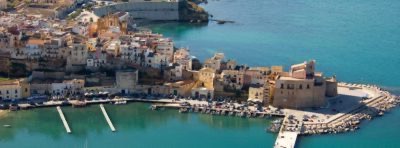
So it is historian Alexis de Tocqueville talk about the Sicily, a land of myths and a grandeur that has no equal anywhere in the world.
What we will face today will be a journey into the heart of the Sicilian tradition, whose stages (divided into two parts) will transport us into the surreal world of myths and stories that have always been handed down here from grandfather to grandson; because Sicily is not only a land to visit, appreciate, taste and smell, but also to listen, tell and disclose so that everyone can know this "motherland of men and gods"!
Mythical places in western Sicily
1. Kalsa district, Palermo
Do you know the legend of the Moor's Heads?
Many have surely heard of the legend of the Moor's heads, but how many do you know where this story is set? These wonderful colored and scrupulously embellished objects are the particular signs of the identity card of our Island, through which we are recognized all over the world. According to tradition, the legend of the Moor's heads dates back to the period during which the Moors dominated the island.
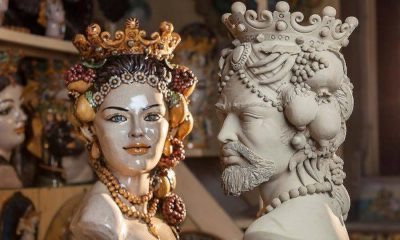
We are around theYear: 1000, therefore, and we stroll through Palermo, in today's Arab quarter of the Kalsa. An enchanting neighborhood that in the years to come will be seen as the custodian of splendid architectural monuments such as "the Spasm" and the Fontana Pretoria. Numerous flowered balconies are located above our heads, but one captures our attention for the luxuriance and the fresh and bewitching scent of the plants it welcomes. We smell deeply: it is basil! A young woman waters it with care and love; we ask her why so much zeal and what we are about to hear will leave us stunned.
To act as a vase for that fragrant plant is the head of a Moror so loved by the woman! She tells us that the man had been fascinated by her beauty, that he had promised her eternal love while in reality he would soon have to return to the East where he had a wife and children. To which, wounded and deceived, in revenge the young woman confesses to us that she decided to cut off the head of the man she loved so that she could live with him forever and to have planted a wonderful basil plant in it which, thanks to her tears, it grows vigorous and beautiful every day.
Frightened by the idea of being able to do the same, we disappear!
The Kalsa district today
What you can see, travelers of the XNUMXst century.
From the Arabic Khalisa, “pure” or “elected”, the Kalsa is the oldest and historic center pivotor of the Sicilian capital.
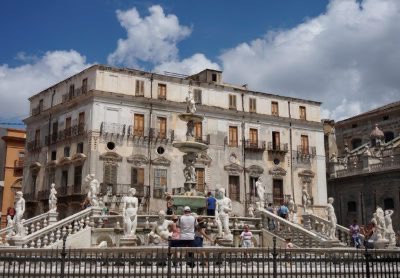
Here are 4 points within the neighborhood that deserve to be reached.
1. Church of Santa Maria dello Spasimo
One of the most evocative churches of western Sicily characterized by the fact of being an "open-air" church. In fact, the construction of the church itself, a cloister, the bell tower, the dormitory, a cemetery and a vegetable garden were foreseen in the project of its manufacture (in the 500th century), but not a roof!
2. Piazza Magione
Dear to the people of Palermo especially for the "emotional" value linked to a hero, symbol of the city, belonging to this district: Giovanni Falcone. The square, in fact, is the site of the celebrations in memory of the Capaci massacre.
3. Fontana Pretoria
One of the masterpieces of Palermo. Built by the sculptors Francesco Camillani and Michelangelo Naccherino in the mid-1500s, it was actually built in Tuscany and only later transported (dismantled) to Sicily by ship. We find in the center "the genius of Palermo”, A putto pouring water, around which mythological characters are positioned, and the allegorical representation of the 4 rivers of the capital.
4. Walk of the bad
An elegant terrace overlooking the sea built around 800. It is accessed from a main staircase located in Piazza Santo Spirito.
Pergusa lake, Enna. The Myth of Proserpina
A story told by Claudiano Strabone, takes us back to the age of the gods.
We are located in the province of Enna, in the Sicilian hinterland. We see a meadow and a group of young girls picking up the few remaining flowers. They are graceful, they exude elegance and beauty, but there is sadness in their eyes. We discover that one of their companions was kidnapped some time before, while they were circling in the green expanse - previously luxuriant - by the king of the Underworld, Pluto, who, tired of the darkness of his kingdom, had decided to surface. The beautiful Proserpina, daughter of Ceres, was the object of his desire; the young women tell us they tried to hold her back, but every attempt was in vain.
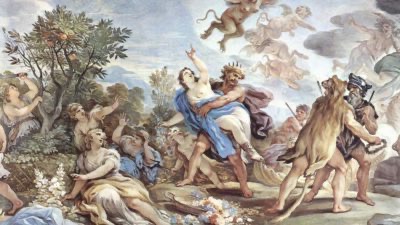
We hear a moan coming from the vegetation, similar to a cry. It is Ceres who mourns the loss of her daughter! Its insane pain causes drought and aridity all around. However, she managed to make a pact with the god: he will allow her to see Proserpina only six months of the year (in spring and summer), while the remaining six will keep her with him down in the underworld (in autumn and winter).
But there are a few days left for the young girl's fateful return, she knows it, and she slowly stops crying as we walk away.
Pergusa lake millennia later
Lake Pergusa is a small natural basin devoid of emissaries and tributaries. To safeguard it, the first was established here Special Nature Reserve of the Island and its waters serve as refreshment for many animal species. A peculiar feature of the lake is the deep presence of a bacterium which periodically releases a reddish pigment that colors the body of water to defend itself from the sun's rays (and no, this is not divine work!)
Here are two places related to the myth:
1. Proserpina Park
A park located within the Special Natural Reserve of Lake Pergusa inaugurated in 2011. A green space suitable for quiet walks and outings even in the company of children, who can enjoy a play area designed for them.
2. Rocca di Cerere
A place stripped of its former glory, a mighty rock on which once lay the Temple of Ceres. A remote point of worship described by the writers of the past as unique and divine, of which only a few ruins remain today.
More bizarre stories
Piazza Armerina, Enna: the sideboard of the Enchanted Stones
In the province of Enna, a few steps from Piazza Armerina, is the Rossomanno Grottascura Bellìa Nature Reserve. Here we will find the so-called Stones Ballerine, a group of rocks that rise leaving room for the imagination. In fact, they seem to have the appearance of men positioned on the clearing. They are said to be men petrified by gods or by evil beings for failing to fulfill certain commitments.
We also recommend:
1. Roman Villa del Casale
World Heritage Site since 1997, this luxurious Roman villa of considerable size is famous throughout the world for being home to precious mosaics depicting scenes of daily life, hunting, divinity and mythology.
2. Cathedral of Maria Santissima delle Vittorie
Main church of Piazza Armerina. It dominates the town with its 40 m bell tower. and its large dome, one of the most important in size in Sicily, of about 76 m. Outside there is a statue in honor of Baron Marco Trigonia, who contributed to the construction of the bell tower.
3. Aragonese Castle
Castle-fortress dating back to the '300, home of the Aragonese. It was later used also as a prison. Today it is a place near which various events are held, but its conditions do not make it possible to access it.
4. Fountain of the canals
Historical fountain of Piazza Armerina. It is said that the faces represented on the 4 channels depict the illustrious figures of the Risorgimento: Giuseppe Mazzini, Camillo Benso, Count of Cavour, Vittorio Emanuele II and Giuseppe Garibaldi.
5. Commandery of the Knights of Malta
The oldest and most interesting church in the city. Built between 1100 and 1200, it was a place of hospitality for Crusader knights and pilgrims.
Sciacca, Agrigento: the history of the Enchanted Castle
In Sciacca, in the province of Agrigento, a rather bizarre man gave birth to a strange one open-air museum fruit of his disturbing imagination and his immense ego. This fellow was called Filippo Bentivegna and no, he is not the character of a made up story! Near Mount Kronio there is a place full of heads carved on trees and stones. The reason why? According to his fantasy, these were the subjects of the imaginary realm that he had invented and of which he was lord.
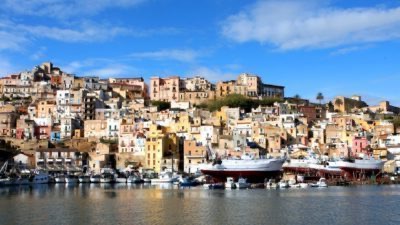
We also recommend:
1. Luna Castle
Imposing medieval castle within the ancient city walls, some of which still exist today.
2. Caves of the Charger
Used as a deposit for grain, the Ancient Caves of the Charger represented, between the thirteenth and fifteenth centuries, the most important economic source of the city. A small developing museum that might be interesting.
Thus ends the first part of ours journey between imagination and reality, but will soon leave with other interesting stories and important places to discover, this time, on the other side of Sicily!


























